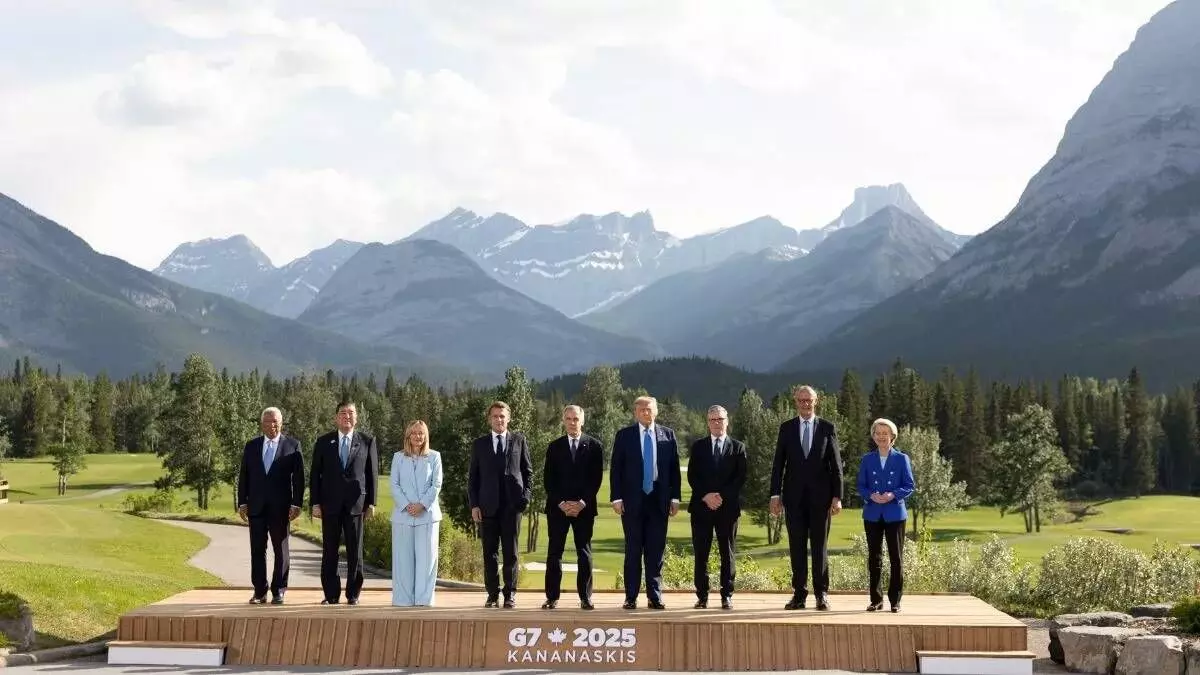Opinion | Why the G7 Is Losing Relevance Without India, China, and Russia
The G7 is losing global relevance by excluding India, China, and Russia—key powers in economy, population, and military strength. A G10 is the need of the hour.
image for illustrative purpose

As Canada wraps up the 2025 G7 Summit in Kananaskis, Alberta, it’s time to ask an uncomfortable but necessary question: Can the G7 still claim global leadership when it excludes three of the world's most significant powers—India, China, and Russia?
Despite its historical clout, the G7—comprising the US, UK, France, Germany, Italy, Canada, and Japan—now accounts for less than half of the world’s GDP and represents under 10% of its population. In an increasingly multipolar world, its current makeup no longer mirrors global economic, demographic, or military dynamics.
A Shrinking Share of the Global Economy
In 2023, the G7’s collective GDP stood at $47.33 trillion, or 44.58% of the global total—down significantly from 62% in 1980. And the imbalance is clear: the United States alone accounts for nearly 59% of G7 output. Meanwhile, China ($17.79 trillion), India ($3.57 trillion), and Russia ($2.02 trillion) together contribute $23.38 trillion—22% of the global economy. Adding them would boost a hypothetical G10's share to 66.6% of global GDP.
The Demographic Imbalance
Global influence cannot be measured by GDP alone. Population matters—in markets, labor, and geopolitics. G7 nations together represent fewer than 800 million people—just 9.6% of the world. In stark contrast, India and China alone account for 35% of humanity. Including Russia, that figure rises to 36.7%. Can any forum that excludes over a third of the world's population truly claim to be global?
Debt and Fiscal Health
G7 countries are burdened with high debt-to-GDP ratios: Japan (249.67%), Italy (134.79%), and the US (123%) top the list. In comparison, India (83%), China (84%), and Russia (a modest 19.55%) are relatively fiscally disciplined. This raises critical questions about long-term sustainability within the G7.
Military Power Disparity
The Global Firepower Index ranks the US, Russia, China, and India as the world’s top four military powers. Yet only one—America—is in the G7. In terms of personnel, tanks, and aircraft, India, China, and Russia often surpass their G7 counterparts.
For instance, India alone has over 5.1 million military personnel—more than the entire G7 combined. China fields more tanks than all G7 nations put together. Military spending by China, India, and Russia ($467.8 billion) also exceeds that of the G7 minus the US ($305.3 billion).
Nuclear capability? Only three G7 members—the US, UK, and France—possess nuclear weapons. The inclusion of Russia, China, and India would double that figure and reflect the current balance of nuclear power.
Toward a G10: A More Representative Forum
Adding India, China, and Russia to the G7 would:
Raise its global GDP share from 44.6% to 66.6%.
Expand its population coverage from 9.6% to over 46%.
Increase military personnel from 4.36 million to 16.23 million.
Include four of the world's five strongest militaries.
Balance U.S. dominance and introduce genuine multipolarity.
Currently, the US dominates the G7 with 58.56% of its GDP. In a G10 structure, that influence drops to 39.2%. Similarly, the US would no longer be the most populous or most tank-rich member, shifting the balance in terms of voice and leverage.
Global Attitudes and the India Gap
This year, President Trump expressed support for Russia’s reintegration and openness to China’s inclusion. Yet, India—despite being the world’s most populous country and a top-5 economy—received no such endorsement. This silence underscores a troubling blind spot in global diplomacy: India remains underrepresented in key forums despite its size, economic promise, and strategic importance.
Conclusion
The G7 is a legacy club in a changed world. Without India, China, and Russia, it no longer reflects geopolitical, demographic, or economic realities. Expanding to a G10 wouldn’t just be symbolic—it would restore the forum’s credibility and relevance. In an era defined by global challenges—climate change, digital security, economic volatility—the need for inclusivity and balance has never been more urgent.
A future-looking G10 could be the platform the world truly needs. But it must begin by acknowledging that influence today is more distributed than ever.

